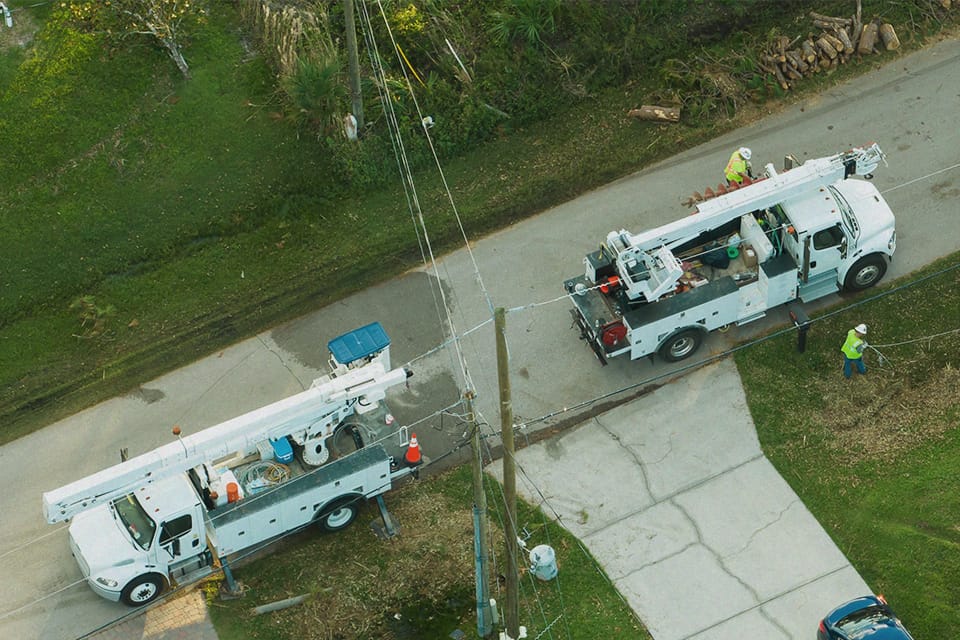
Building Energy Resilience for a Secure Future

Energy resilience is becoming a critical focus for the utilities sector. Ensuring reliable energy delivery is no longer just about consistent supply; it’s about preparing for the unexpected. With an increase in extreme weather events, cyber threats, and aging infrastructure, utilities companies must adapt quickly to maintain service reliability.
The difference between reliable energy and energy resilience can be subtle. Reliable energy focuses on the consistent, dependable supply of power. Energy resilience, on the other hand, emphasizes the ability to anticipate, prepare for, and adapt to disruptions. Reliability is a day-to-day priority, while resilience is a long-term investment.
In this article, we discover the growing importance of energy resilience for the utilities industry and its role in ensuring reliable energy delivery.
What is Energy Resilience?
Energy resilience refers to the ability to recover quickly from unexpected disruptions while minimizing downtime. It involves strategies that ensure power systems can withstand and quickly recover from natural disasters, cyberattacks, and operational failures.
According to a survey from the Cybersecurity and Infrastructure Security Agency (CISA), 25% of organizations are already seeing climate events damaging their critical infrastructure. These disruptions can cause prolonged outages and service interruptions, costing the economy billions each year. Preparing for these challenges is essential for maintaining reliable energy for homes, businesses, and critical services.
The Growing Need for Energy Resilience in Utilities
1. Increased Weather-Related Disruptions
The utilities industry is seeing an uptick in climate-related disruptions. Severe storms, hurricanes, wildfires, and floods have all become more frequent. Research indicates that 58% of weather-related power outages between 2000 and 2023 in the US were caused by severe weather events. Winter weather was the second-highest leading event, with 23% of outages attributed to it. Tropical cyclones (14%), extreme heat (3%), and wildfires (2%) also contributed to U.S. power outages.
Because of this, utilities companies must implement more robust resilience strategies to maintain reliable energy during such events.
2. Rising Cybersecurity Threats
The energy sector is a prime target for cyberattacks. According to the International Energy Agency (IEA), the number of cyberattacks on critical energy infrastructure doubled between 2020 and 2022, from 499 to 1101. While the true scale of cyberattacks on energy is unknown, IEA data shows a dramatic rise in the targeting of utilities including power, gas, and water supplies.
Cyberattacks can lead to data breaches, grid disturbances, and significant downtime, making energy resilience a top priority for the industry. Implementing advanced security measures and real-time monitoring is critical to protect against these threats.
3. Aging Infrastructure and the Need for Modernization
Much of the U.S. energy infrastructure is decades old. A 2021 report from the American Society of Cicil Engineers (ASCE) gave the U.S. energy infrastructure a grade of C-. Although this marks an improvement over the D+ grade in ASCE’s 2017 report, the 2021 report shows that the long-term investment gap continues to widen. The gap has grown from $2.2 trillion over 10 years in the previous report to $2.59 trillion in the latest report. This represents an annual shortfall of nearly $260 billion.
America’s outdated infrastructure is more vulnerable to failures, increasing the likelihood of disruptions. For the utilities industry, investing in modernization is key to building resilience and ensuring reliable energy.
The Impacts of Energy Disruptions
- In 2020, weather-related outages cost the U.S. economy up to $70 billion annually.
- The average cost of a data breach is $4.24 million, according to IBM’s 2021 report.
- Power outage events due to weather have increased by 67% over the past two decades.
Key Strategies for Building Energy Resilience
To build energy resilience, utilities companies need a multi-faceted approach. Some key strategies include:
- Microgrids and Distributed Energy Resources (DERs): Microgrids and DERs, such as solar and battery storage, provide localized power generation. They can operate independently from the main grid, allowing for continuous supply during broader outages
- Grid Hardening: This involves upgrading poles, wires, and substations to withstand extreme weather conditions. Hardening the grid reduces the chances of weather-related damage and service interruptions
- Advanced Metering Infrastructure (AMI): AMI technology enables real-time monitoring and quick identification of faults. It helps utilities respond faster to outages and improve recovery time.
- Cybersecurity Enhancements: Implementing strong cybersecurity frameworks and using AI-based monitoring systems can detect and mitigate potential threats before they cause harm.
Benefits of a Resilient Energy System
Building energy resilience offer several benefits for the utilities industry:
- Reduced Downtime: A resilient energy system can minimize the duration of outages, leading to reduced economic impact and customer dissatisfaction.
- Enhanced Safety and Security: Improved infrastructure and cybersecurity measures enhance overall system safety, reducing the risk of catastrophic failures.
- Cost Savings: While building energy resilience requires upfront investment, it can significantly reduce costs associated with damages, fines, and customer compensation during outages
- Compliance and Reputation: Resilient systems ensure compliance with regulatory standards and strengthen the utility’s reputation as a reliable energy provider.
Building a Resilient Future
The utilities industry faces complex challenges, from climate change to cyber threats. However, adopting a proactive approach to energy resilience will be critical to ensuring reliable energy for generations to come. By investing in grid modernization, cybersecurity, and robust recovery plans, utilities can build a resilient energy system that adapts to change and withstands the unexpected.
For utilities companies looking to strengthen their position, it’s time to prioritize resilience. As the landscape evolves, focusing on resilience will not only protect current operations, but also secure a sustainable and reliable energy future.
Veriforce’s utilities industry experts can help streamline operations and boost overall efficiency. Contact us to learn how we can help you build a stronger, more resilient energy future.




